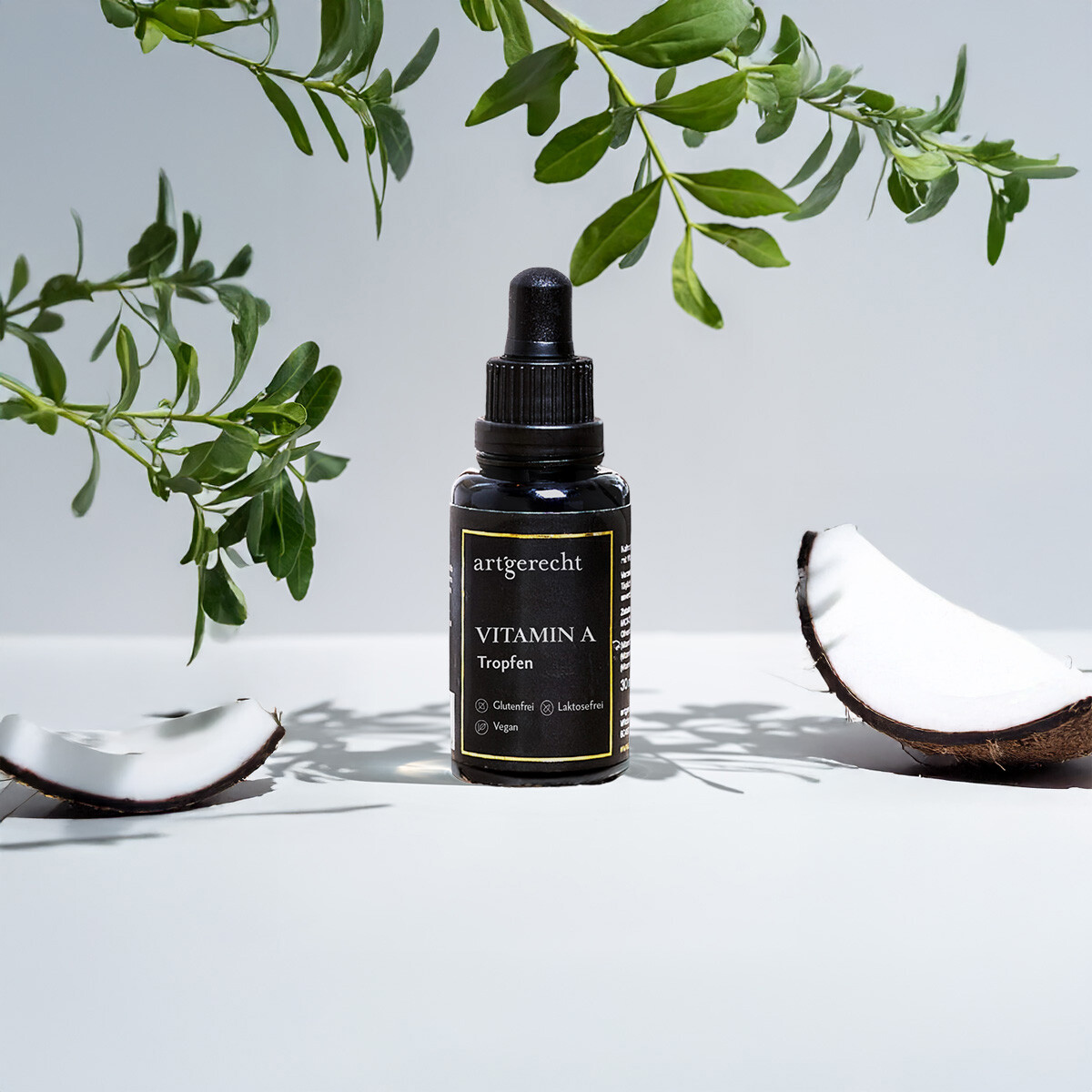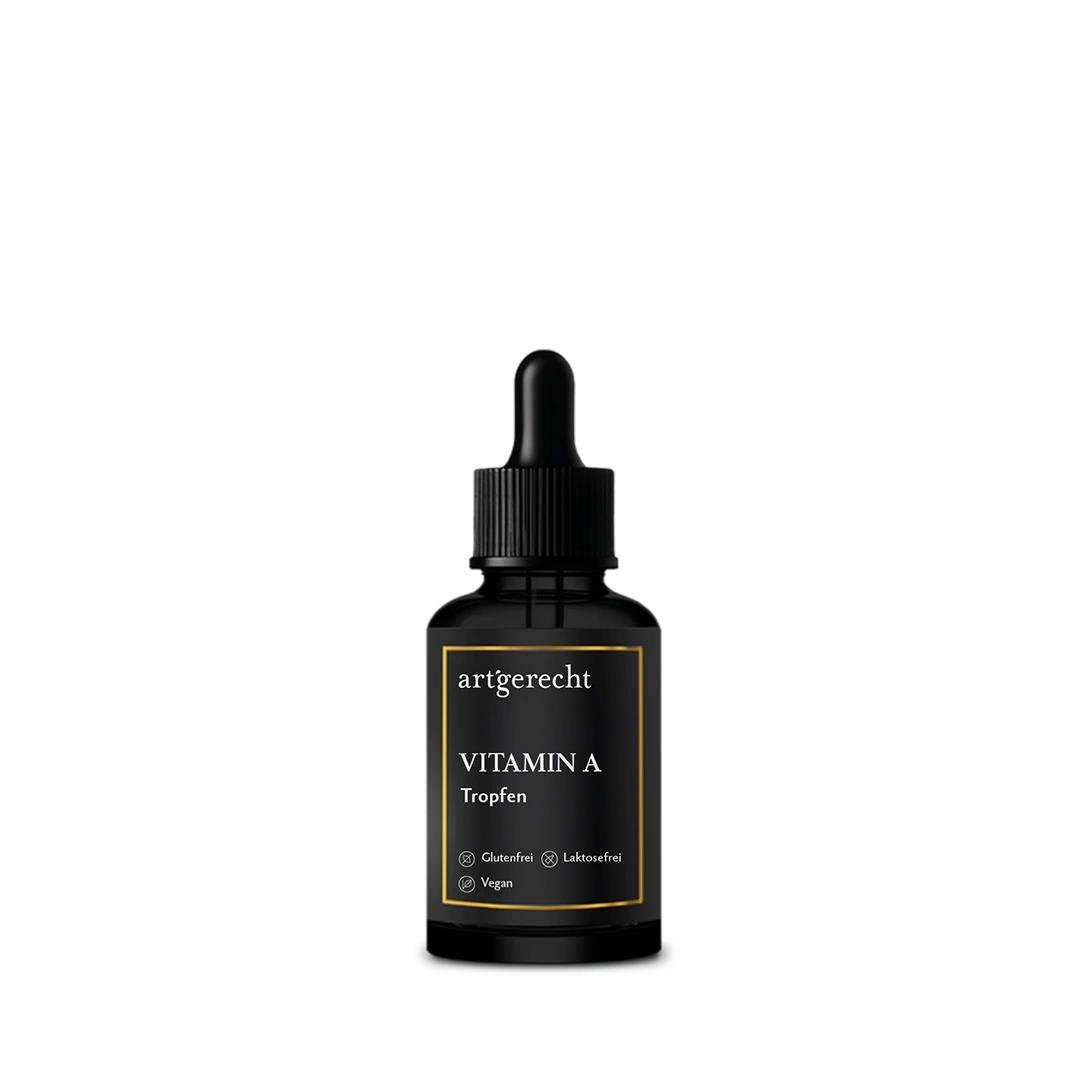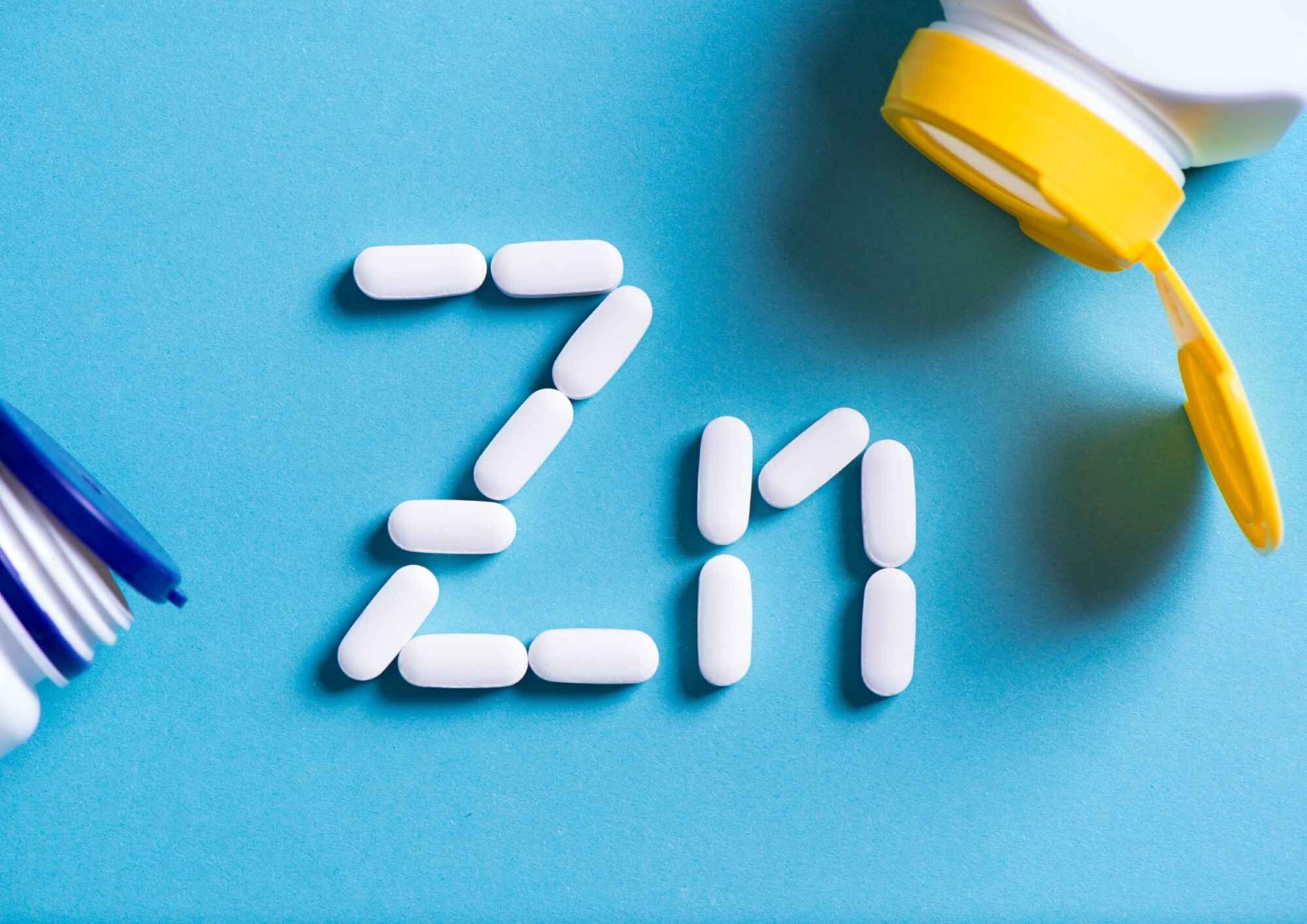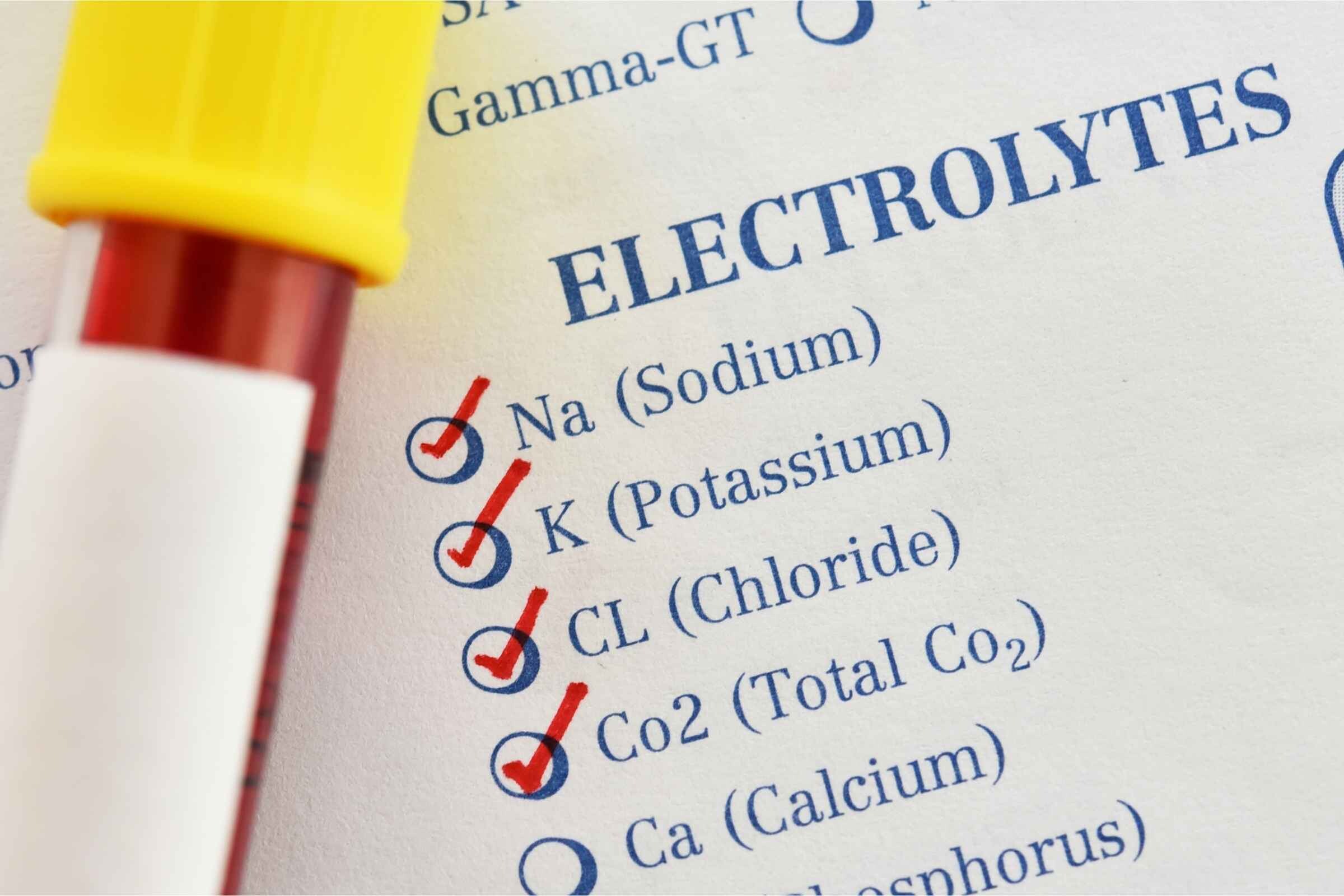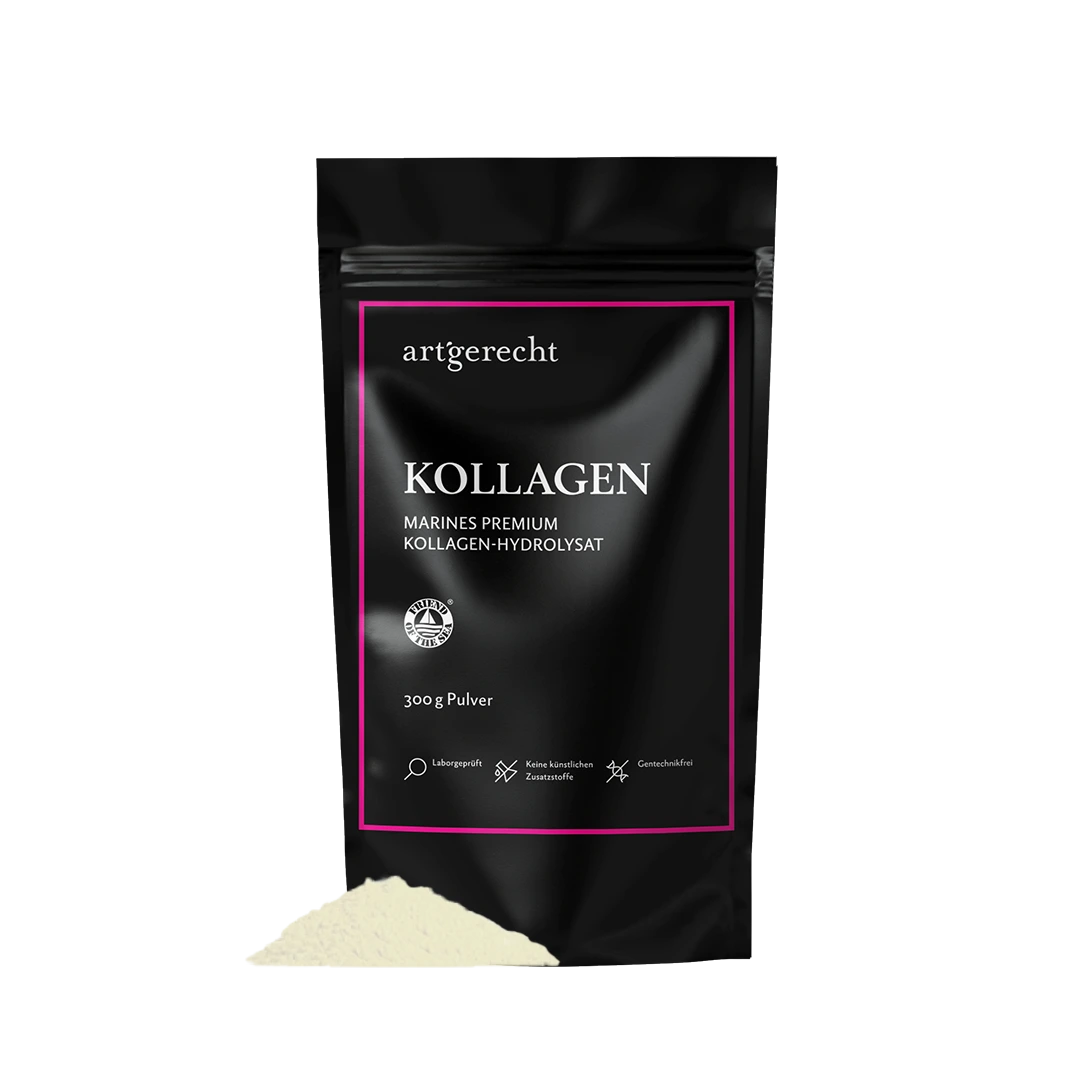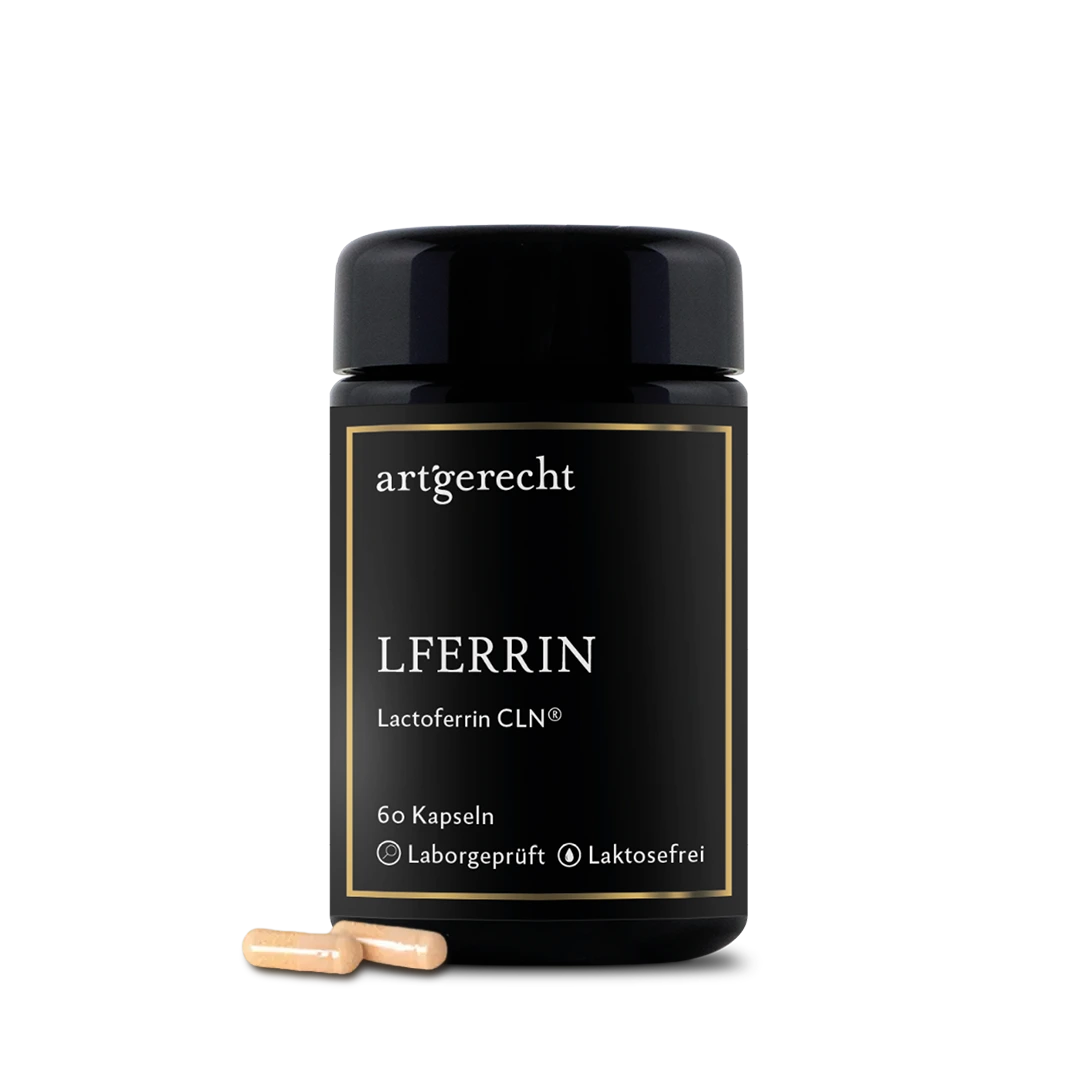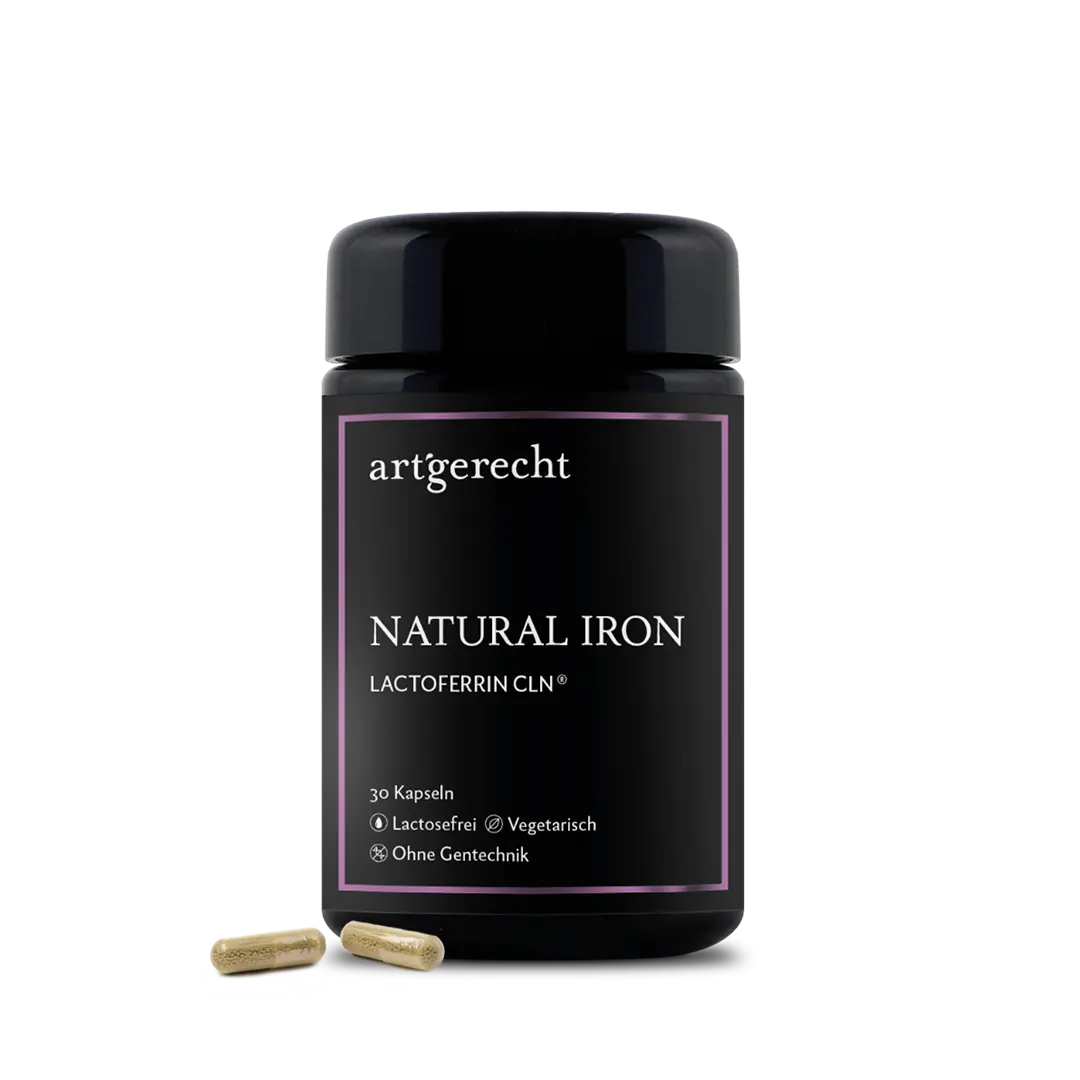Vitamins are essential nutritional components that our body needs in small amounts to maintain a variety of vital functions. They act as coenzymes, regulate gene expression and contribute to signal transmission. Without them, deficiency symptoms occur in the long term, which can only gradually and later develop into serious health problems.
Vitamin A plays a special role in this group. Strictly speaking, it is not a classic vitamin, as the body can produce it itself from precursors such as beta-carotene. Nevertheless, the body's own synthesis is often not sufficient to cover the requirement. Adequate intake through the diet is therefore essential, especially for vision, the immune system and cell growth. Despite its central importance, vitamin A is often underestimated or consumed with caution, as overdosing can be just as problematic as a deficiency. [1]
Vitamin A and its effects on our body
Vitamin A belongs to the retinoid group and consists of a long carbon chain with a ring-shaped structure at the end. The most important form, retinol, is a fatty compound that the body can store and convert into other active forms such as retinal (for vision) or retinoic acid (for cell growth and skin renewal). Plant precursors such as beta-carotene consist of two linked retinol molecules, which the body converts into vitamin A as required.
Vitamin A is one of the nutrients that are essential for our body - but its importance is often underestimated. It is not only essential for our eyesight, but also for the immune system, the skin and many other vital functions. But what exactly does vitamin A do in our body, and why is it so important to have a sufficient supply?
1. eyesight
One of the best-known effects of vitamin A is its role in eye health. Without this vitamin, our vision would be severely impaired - especially in poor light conditions. This is because vitamin A is found in the retina as retinal, a component of the visual pigment rhodopsin. This pigment helps us to see even in low light. A vitamin A deficiency can therefore lead to night blindness - a condition in which the eyes have difficulty adapting to darkness. But that's not all: vitamin A also contributes to general eye health by protecting the cornea and preventing irritation caused by dryness.
2. immune system
Vitamin A plays a crucial role in our immune system. It helps to keep mucous membranes in the respiratory tract, intestines and other parts of the body healthy - an important protection against pathogens. At the same time, it supports the production of white blood cells, the leukocytes, which are necessary for the defense against infections. A lack of vitamin A can therefore increase the risk of infection, especially for respiratory diseases or digestive problems. Studies show that an adequate supply of this vitamin strengthens the immune system and can reduce inflammation in the body.
3. skin & cell growth
Vitamin A is a real booster for our skin. It plays a central role in cell growth and skin renewal. Retinoids, a form of vitamin A, are found in many anti-ageing creams as they help to keep skin supple, reduce fine lines and combat acne. This is because vitamin A stimulates collagen production, which keeps the skin elastic and resilient. It also supports cell division, which is particularly important for wound healing and regeneration of our skin. Thanks to its antioxidant properties, vitamin A can neutralize free radicals and thus also counteract skin ageing. Conversely, a vitamin A deficiency can also lead to dry, flaky skin and slow down wound healing. So if you want to have radiant skin, you should always make sure you have a good vitamin supply.
4. Pregnancy & development
Vitamin A is not only important for adults, but also plays a major role during pregnancy and child development. It contributes to the formation of new cells and is therefore essential for the growth and development of the embryo. A sufficient supply is particularly important for the development of the nervous system, organs and skeleton. However, the following applies here: Too much is not good! Overdosing during pregnancy can lead to developmental disorders, which is why pregnant women should ensure a balanced intake, preferably from natural foods.
Occurrence
Vitamin A is found in the diet in two different forms: as directly usable retinol in animal foods and as provitamin A carotenoids in plant sources. While animal foods provide the body with immediately usable vitamin A, plant precursors must first be converted - a process that does not work equally efficiently for everyone.
Animal source of vitamin A:
Particularly high concentrations of vitamin A are found in the liver. Even small amounts from this organ are enough to far exceed the daily requirement. Other animal products such as eggs, butter and some types of fish, including eel, also contain significant amounts of the vitamin. The advantage of animal sources is that they provide vitamin A in its already active form so that the body can use it directly. In addition, these foods usually contain sufficient fat, which facilitates the absorption of the fat-soluble vitamin.
Plant sources: Provitamin A carotenoids
Vitamin A is not contained directly in plant-based foods, but in the form of provitamin A carotenoids such as beta-carotene and alpha-carotene. These must first be converted into vitamin A, a process that begins in the small intestine. An estimated 17% of ingested beta-carotene is converted directly into usable vitamin A, while the remainder is further processed in the liver, kidneys, lungs or muscle cells. [2] Carrots, sweet potatoes, spinach and kale, for example, contain particularly high levels of beta-carotene.
As carotenoids are fatty, it is important to combine them with a source of fat. A salad with carrots and some oil or a spinach dish with nuts or avocado significantly improves absorption.
Recommended-intake-and-requirement-of-vitamin-A
In 2023, the European Food Safety Authority set the Tolerable Upper Intake Level for vitamin A at 3 mg (3,000 µg) per day, which corresponds to 10,000 IU (International Units). This value applies above all to men and young women, as well as pregnant or breastfeeding women, while postmenopausal women should rather consume 1.5 mg/day due to the increased risk of osteoporosis. Over 95% of the population remain below the maximum safe level. Beta-carotene, the plant-based precursor of vitamin A, is only converted into active vitamin A when needed, which prevents overdosing from plant sources. [3]
Sources:
[1] Hahn, A. (2024). Vitamins. In Food chemistry (pp. 107-145). Berlin, Heidelberg: Springer Berlin Heidelberg.
[2] https://biogena.com/de-de/wissen/ratgeber/vitamin-a_bba_5433685
[3] Debelo, H., Novotny, J. A., & Ferruzzi, M. G. (2017). Vitamin a. Advances in Nutrition, 8(6), 992-994.

